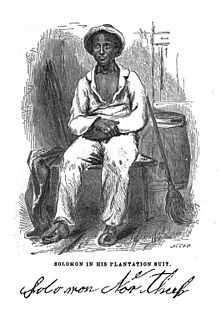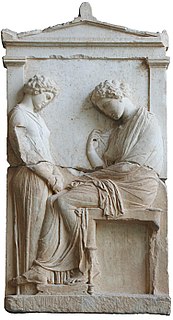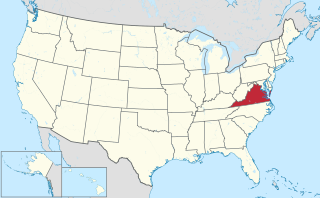
Mā malakat aymānukum is a Quranic expression referring to slaves.

Slavery had mostly died out in western Europe about the year 1000, replaced by serfdom. It lingered longer in England and in peripheral areas linked to the Muslim world, where slavery continued to flourish. Slavery became more widespread in Ireland throughout the 11th century, as Dublin became the biggest slave market in Western Europe. Church rules suppressed slavery of Christians. Most historians argue the transition was quite abrupt around 1000, but some see a gradual transition from about 300 to 1000.
Islamic views on slavery represent a complex and multifaceted body of Islamic thought, with various Islamic groups or thinkers espousing views on the matter which have been radically different throughout history. Slavery was a mainstay of life in pre-Islamic Arabia and surrounding lands. The Quran and the hadith address slavery extensively, assuming its existence as part of society but viewing it as an exceptional condition and restricting its scope. Early Islamic dogma forbade enslavement of free members of Islamic society, including non-Muslims (dhimmis), and set out to regulate and improve the conditions of human bondage. The sharīʿah regarded as legal slaves only those non-Muslims who were imprisoned or bought beyond the borders of Islamic rule, or the sons and daughters of slaves already in captivity. In later classical Islamic law, the topic of slavery is covered at great length. Slaves, be they Muslim or those of any other religion, were equal to their fellow practitioners in religious issues.

The relationship between George Washington and slavery was complex, contradictory and evolved over time. It operated on two levels: his personal position as a slaveowning Virginia planter and later farmer; and his public positions first as commander-in-chief of the Continental Army during the American Revolutionary War and later as President of the United States. He owned slaves almost his entire life, having inherited the first ten slaves at the age of eleven on the death of his father in 1743. In adulthood his personal slaveholding increased through inheritance, purchase and natural increase, and he gained control of dower slaves belonging to the Custis estate on his marriage in 1759 to Martha Dandridge Custis. He put his slaves to work on his Mount Vernon estate, which in time grew to some 8,000 acres (3,200 ha) encompassing five separate farms, initially planting tobacco but diversifying into grain crops in the mid 1760s. Washington's early attitudes to slavery reflected the prevailing Virginia planter views of the day; he demonstrated no moral qualms about the institution and referred to his slaves as "a Species of Property." He became skeptical about the economic efficacy of slavery before the American Revolution, and grew increasingly disillusioned with the institution after it. Washington remained dependent on slave labor, and by the time of his death in 1799 he owned 124 slaves, whom he freed in his will, and controlled another 193, most of whom remained enslaved.

Twelve Years a Slave is an 1853 memoir and slave narrative by American Solomon Northup as told to and edited by David Wilson. Northup, a black man who was born free in New York state, details his being tricked to go to Washington, D.C., where he was kidnapped and sold into slavery in the Deep South. He was in bondage for 12 years in Louisiana before he was able to secretly get information to friends and family in New York, who in turn secured his release with the aid of the state. Northup's account provides extensive details on the slave markets in Washington, D.C. and New Orleans, and describes at length cotton and sugar cultivation and slave treatment on major plantations in Louisiana.
Solomon Bayley was an African American man who is best known for his 1825 autobiography entitled A Narrative of Some Remarkable Incidents in the Life of Solomon Bayley, Formerly a Slave in the State of Delaware, North America. Published in London, it is among the early slave narratives written by slaves who gained freedom before the American Civil War and emancipation. Bayley was born into slavery in Delaware. After escaping and being recaptured, he later bought his freedom, and that of his wife and children. He worked as a farmer and at a sawmill. In their later years, he and his wife emigrated in 1827 to the new colony of Liberia, where he worked as a missionary and farmer. His short book about the colony was published in Delaware in 1833.

The history of slavery in Kentucky dates from the earliest permanent European settlements in the state, until the end of the Civil War. Kentucky was classified as the Upper South or a Border state, and enslaved African Americans represented up to 25% of the population before the Civil War, concentrated in the cities of Louisville and Lexington, both in the fertile Bluegrass Region, a center of tobacco plantations and horse farms.

The Slave Community: Plantation Life in the Antebellum South is a book written by American historian John W. Blassingame. Published in 1972, it is one of the first historical studies of slavery in the United States to be presented from the perspective of the enslaved. The Slave Community contradicted those historians who had interpreted history to suggest that African American slaves were docile and submissive "Sambos" who enjoyed the benefits of a paternalistic master-slave relationship on southern plantations. Using psychology, Blassingame analyzes fugitive slave narratives published in the 19th century to conclude that an independent culture developed among the enslaved and that there were a variety of personality types exhibited by slaves.

Slavery in Great Britain existed and was recognized from before the Roman occupation until the 12th century, when chattel slavery disappeared, at least for a time, after the Norman Conquest. Former slaves merged into the larger body of serfs in Britain and no longer were recognized separately in law or custom.
The Council of London was a Catholic church council convened by Anselm, archbishop of Canterbury, on Michaelmas in 1102. It marked the first major council of his episcopate, as he had been prohibited from convening any during the reign of William II of England. Anselm took the opportunity to initiate the Gregorian Reformation, prohibiting marriage, concubinage, and drunkenness to all those in holy orders, condemning sodomy and simony, and regulating clerical dress. Anselm also obtained a resolution against the British slave trade, although this was aimed mainly at the sale of English slaves to Ireland and did not prevent the church from owning slaves.

The Bible contains several references to slavery, which was a common practice in antiquity. The biblical texts outline sources and legal status of slaves, economic roles of slavery, types of slavery, and debt slavery, which thoroughly explain the institution of slavery in Israel in antiquity. The Bible stipulates the treatment of slaves, especially in the Old Testament. There are also references to slavery in the New Testament.

Voluntary slavery, in theory, is the condition of slavery entered into at a point of voluntary consent. It is distinguished from involuntary slavery where an individual is forced to a period of servitude usually as punishment for a crime. In actual practice, however, the term is often a euphemism used to hide conditions of slavery which are, in fact, less than completely voluntary.
Child-selling is the practice of selling children, usually by parents, legal guardians, or subsequent masters or custodians. After a sale, when the subsequent relationship with the child is essentially non-exploitative, the usual purpose of child-selling is to permit adoption.

Slavery in Somalia existed as a part of the Arab slave trade. To meet the demand for menial labor, Bantus from southeastern Africa captured by Somali slave traders were sold in cumulatively large numbers over the centuries to customers in Somalia and other areas in Northeast Africa and Asia. People captured locally during wars and raids were also sometimes enslaved by Somalis mostly of Oromo and Nilotic origin. However, the perception, capture, treatment and duties of both groups of slaves differed markedly, with Oromo favored because Oromo subjects were not viewed as racially jareer by their Somali captors.

Slavery in the Madras Presidency during the British Raj affected close to 20% of the population. The landlords were predominantly higher caste individuals. When those from the lower castes borrowed money against their land and defaulted, they entered a life of debt bondage. The slaves formed 12.2% of the total population in 1930.

Slavery in Niger involves a number of different practices which have been practiced in the Sahel region for many centuries and which persist to this day. The Bornu Empire in the eastern part of Niger was an active part of the trans-Saharan slave trade for hundreds of years. Other ethnic groups in the country similarly had a history of slavery, although this varied and in some places slavery was largely limited to the political and economic elite. When the French took control of the area they largely ignored the problem and only actively banned the trade in slaves but not the practices of slavery. Following independence, many of the major slave holders became prominent political leaders in both the multiparty democracy period and the military dictatorship, and so the problem of slavery was largely ignored. In 2003, with pressure from the anti-slavery organization Timidria, Niger passed the first law in Western Africa that criminalized slavery as a specific crime. Despite this, slavery persists throughout the different ethnic groups in the country, women are particularly vulnerable, and a 2002 census confirmed the existence of 43,000 slaves and estimated that the total population could be over 870,000 people. The landmark Mani v. Niger case was one of the first instances where a person won a judgement against the government of Niger in an international court for sanctioning her slave status in official decisions.

Slavery was a common practice in ancient Greece, as in other societies of the time. Some Ancient Greek writers considered slavery natural and even necessary. This paradigm was notably questioned in Socratic dialogues; the Stoics produced the first recorded condemnation of slavery.

Slavery in the Muslim world first developed out of the slavery practices of pre-Islamic Arabia, and was at times radically different, depending on social-political factors such as the Arab slave trade. Throughout Islamic history, slaves served in various social and economic roles, from powerful emirs to harshly treated manual laborers. Early on in Muslim history they were used in plantation labor similar to that in the Americas, but this was abandoned after harsh treatment led to destructive slave revolts, the most notable being the Zanj Rebellion of 869–883. Slaves were widely employed in irrigation, mining, and animal husbandry, but the most common uses were as soldiers, guards, and domestic workers. Many rulers relied on military slaves, often in huge standing armies, and slaves in administration to such a degree that the slaves were sometimes in a position to seize power. Among black slaves, there were roughly two females to every one male. Two rough estimates by scholars of the number of slaves held over twelve centuries in the Muslim world are 11.5 million and 14 million, while other estimates indicate a number between 12 and 15 million slaves prior to the 20th century.














